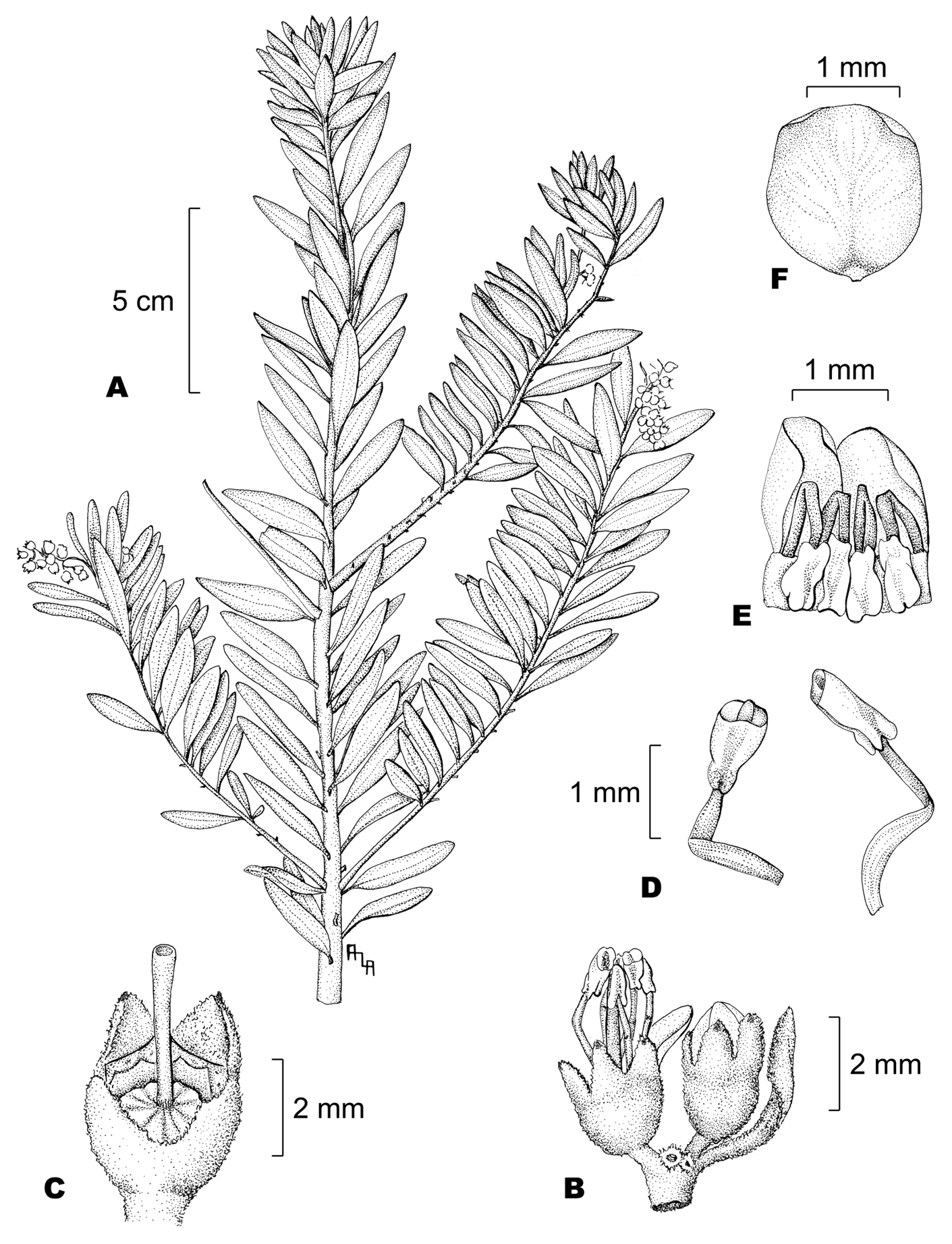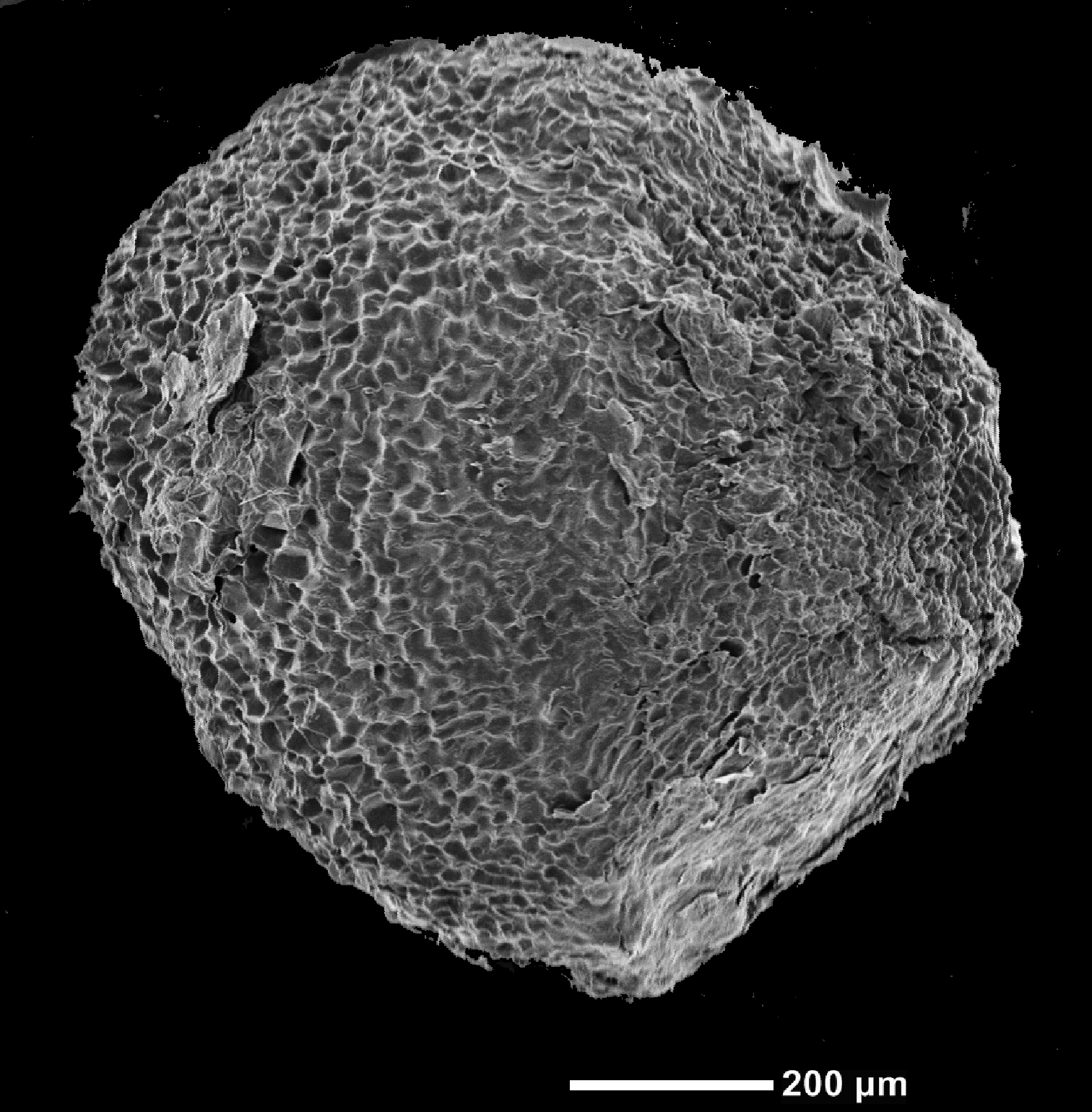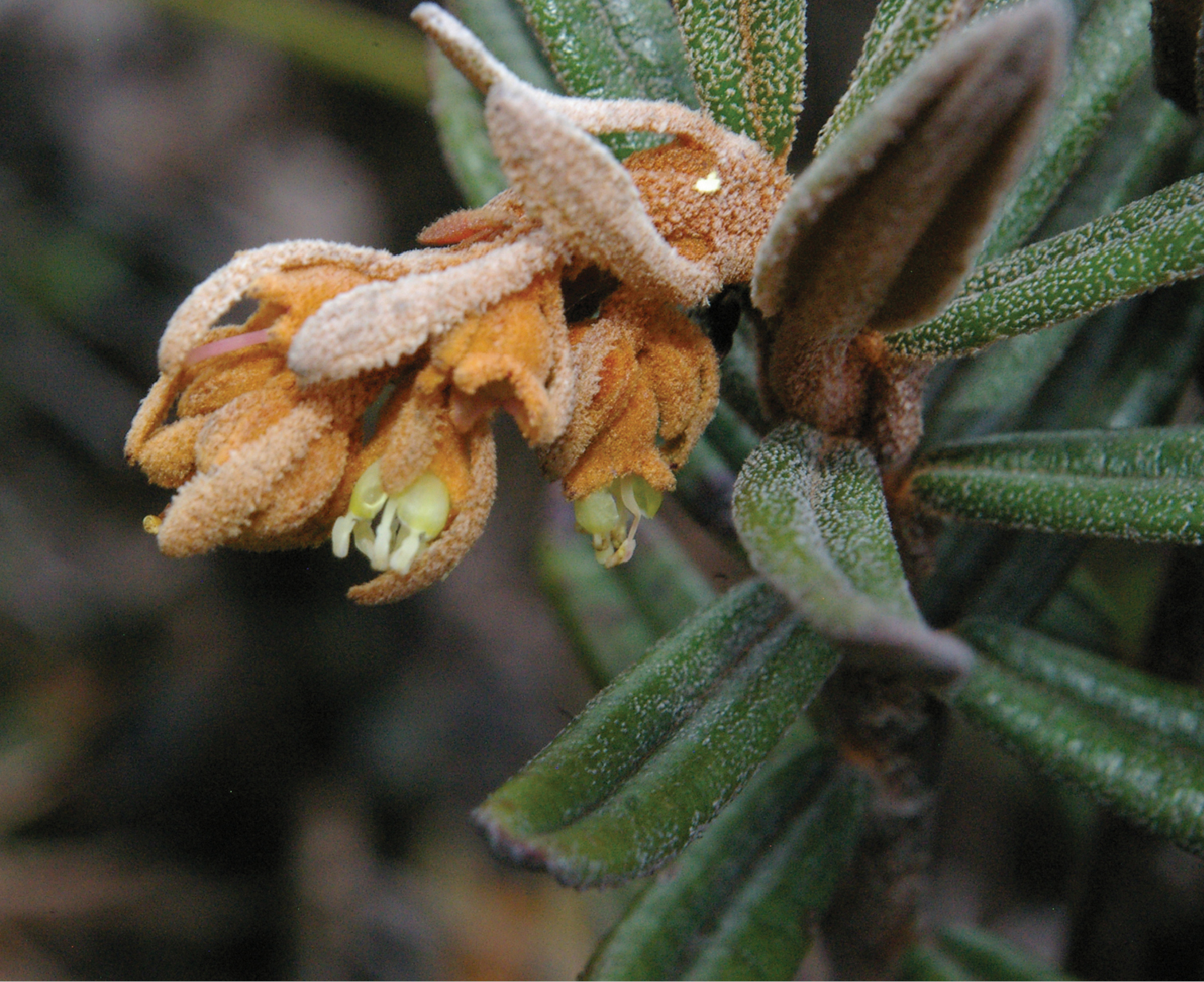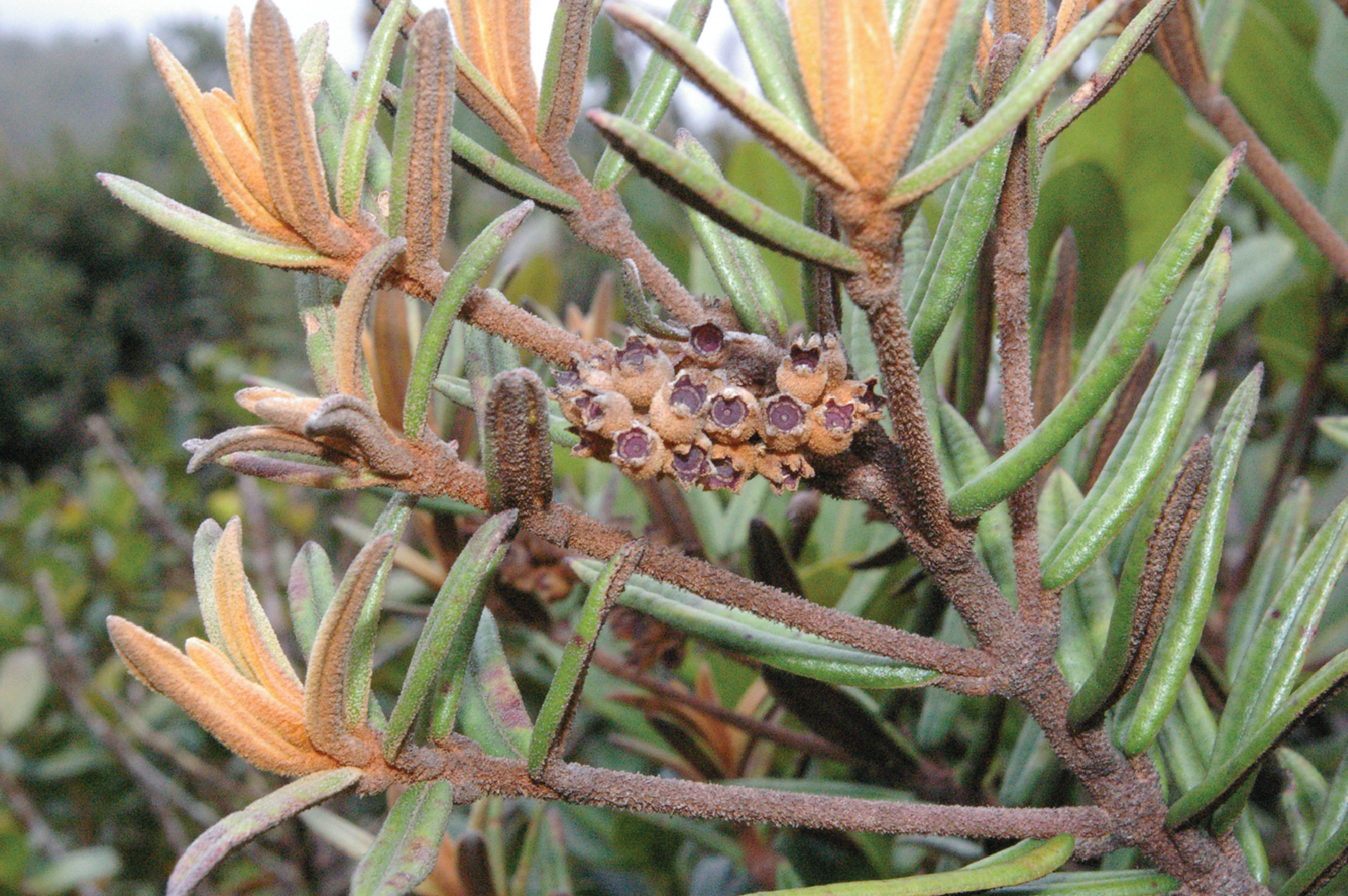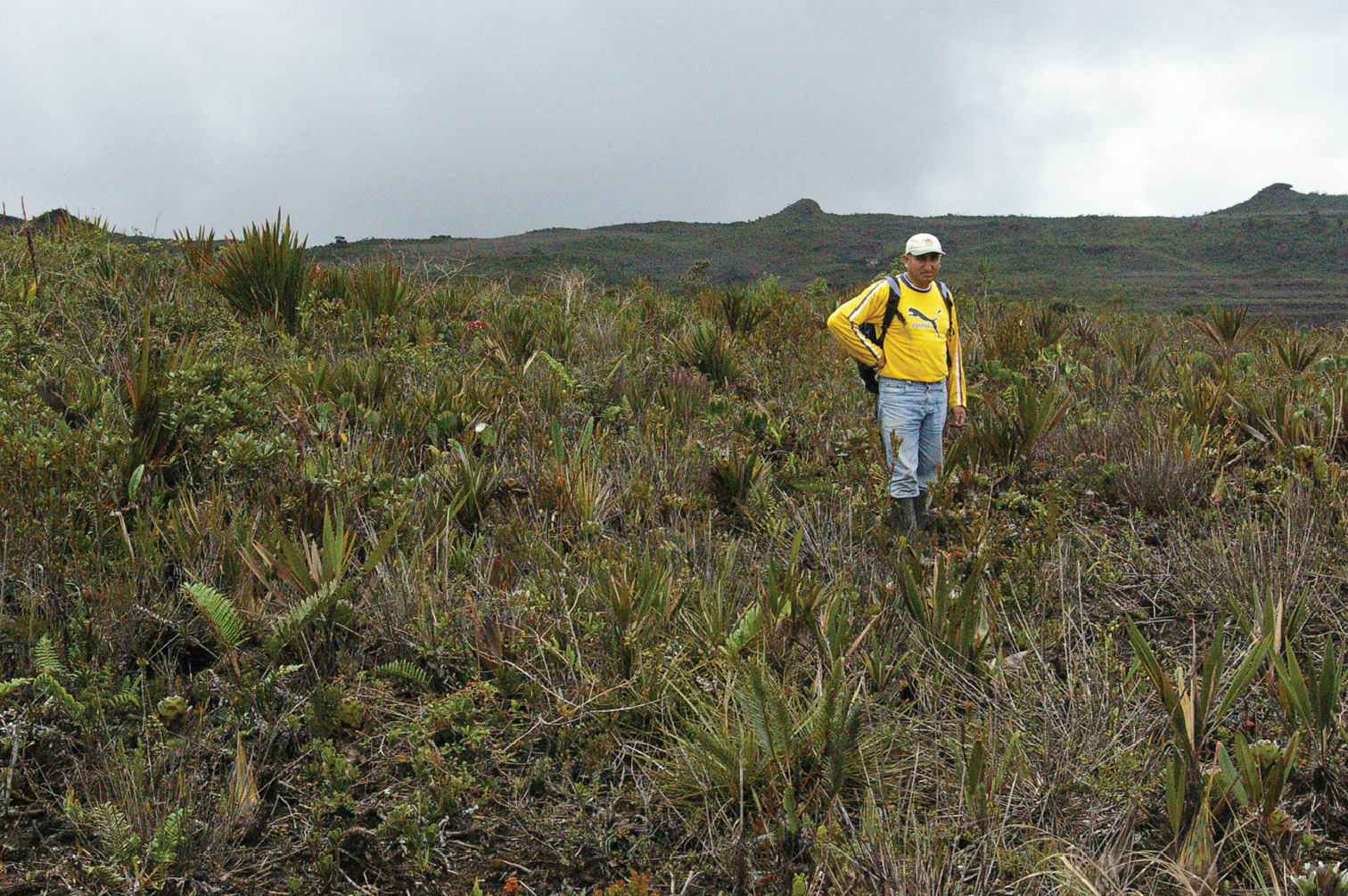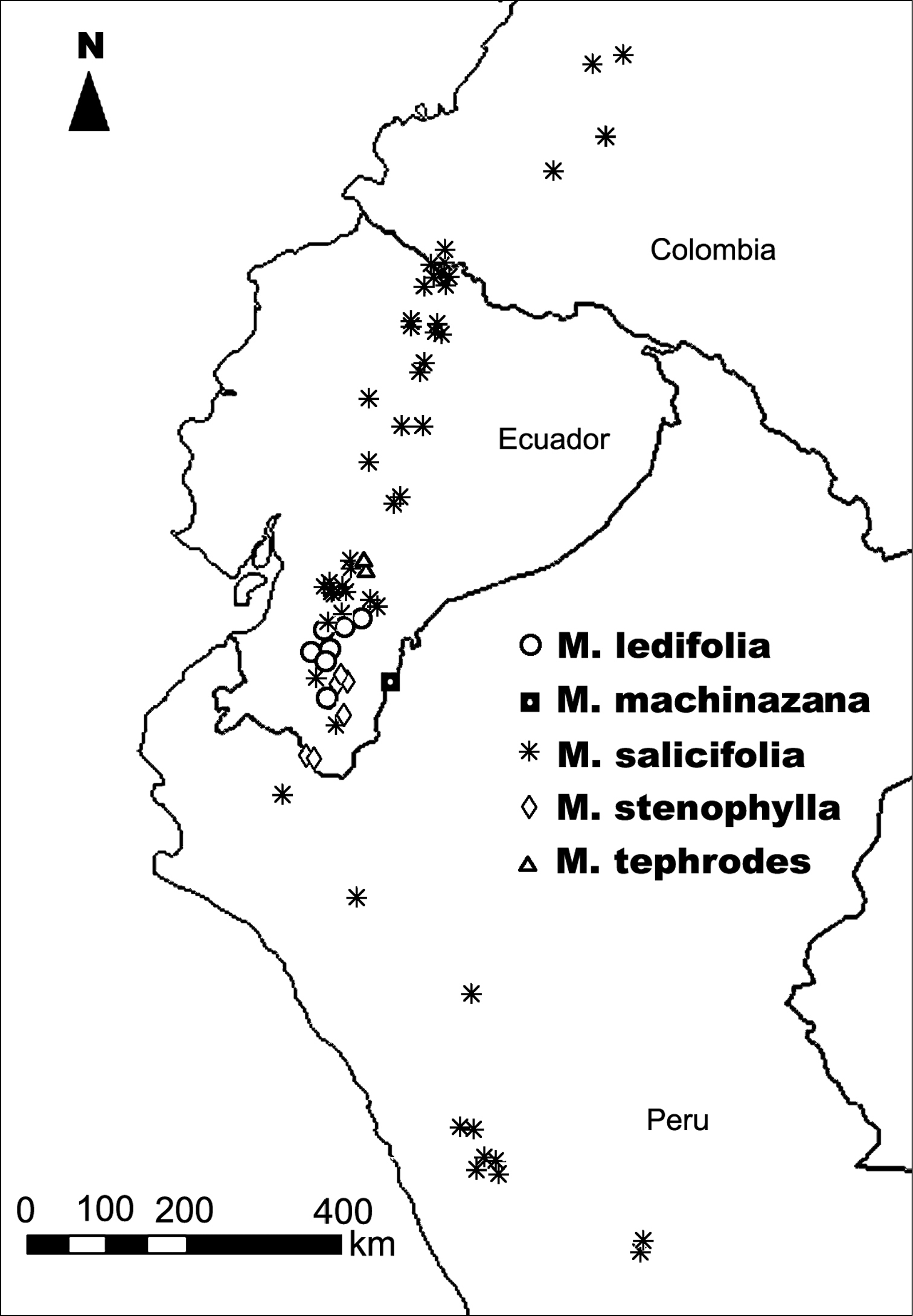






(C) 2012 Carmen Ulloa Ulloa. This is an open access article distributed under the terms of the Creative Commons Attribution License 3.0 (CC-BY), which permits unrestricted use, distribution, and reproduction in any medium, provided the original author and source are credited.
For reference, use of the paginated PDF or printed version of this article is recommended.
Miconia machinazana C.Ulloa & D.A. Neill, sp. nov., a new species of Melastomataceae from the Ecuador-Peru border is described and illustrated. It is characterized by the narrow, decussate leaves, dense reddish brown indument, small flowers in short panicles, pale yellow petals, and anthers opening by two large terminal pores.
ResumenSe describe e ilustra Miconia machinazana C. Ulloa & D.A. Neill, sp. nov., una nueva especie de Melastomataceae de la frontera ecuatoriano-peruana, caracterizada por las hojas angostas, decusadas, el denso indumento café-rojizo, las flores pequeñas en panículas cortas, los pétalos de un amarillo pálido y las anteras abriéndose por dos poros anchos terminales.
Cordillera del Cóndor, Ecuador, endemism, IUCN, Melastomataceae, Miconia, Peru
Miconia Ruiz & Pav., is a megadiverse genus, the largest in the family Melastomataceae, and comprises some 1050 Neotropical species (
Explorations in the remote Cordillera del Cóndor in southern Ecuador yielded a shrub erroneously identified in the field as the genus Myrteola O. Berg (Myrtaceae) due to the decussate, coriaceous, small, linear leaves reminiscent of Myrteola phylicoides (Benth.) Landrum. The leaf arrangement and the non-apparent classic checkerboard venation, of many species in the Melastomataceae led to that mistake. However, the habit of this plant is characteristic of a few high Andean species of Miconia, including the widespread Miconia salicifolia (Naudin) Naudin, to which this plant shows a similar habit. Further study has revealed unique features that lead us to propose it as a new species of Miconia.
MethodsHerbarium and laboratory work involved taking measurements of the vegetative parts from the dry herbarium specimens; the flowers were rehydrated before taking measurements under a dissecting scope. Seeds were sputter coated with gold/palladium and photographed with a scanning electron microscope (JEOL JCM-5000). Herbarium specimens were consulted and compared at HA, K, LOJA, MA, MO, QCA, and QCNE; necessary herbarium specimens were requested on loan, and additional material was consulted over the internet in various virtual herbaria (COL, NY, US, JStor Plant Science types).
Taxonomic treatmenturn:lsid:ipni.org:names:77118901-1
http://species-id.net/wiki/Miconia_machinazana
Figs 1–4Haec species ad Miconiam sect. Cremanium (D.Don) Hook.f. pertinens, a congeneris sect. Chaenopleurae (DC.) Hook.f. floribus pentameris differt; intra sect. Cremanium a Miconia rigente Naudin foliis minoribus (usque ad 35.1 mm vs. 60 mm longis) petalis luteolis (vs. albis et roseis) atque foliis 1- (vs. 3-)nerviis, a Miconia ledifolia (DC.) Naudin foliis latioribus (usque ad 10.5 mm vs. 4 mm latis) atque fructu majore (2.4–3.9 × 2.8–3.8 mm in Miconia ledifolia) seminibus pluribus (usque ad 9 in Miconia ledifolia) differt.
Ecuador. Zamora-Chinchipe: Paquisha, Cordillera del Cóndor. The Machinaza plateau. About 500 m W of the Ecuador-Peru international border, near end of trail from Paquisha Alto military post. 03°54'06"S, 78°28'57"W, 2315 m, 23 June 2009 (fl, fr), D.A.Neill & C.Kajekai 16909 (holotype MO!; isotypes AAU!, CAS!, LOJA!, M!, NY!, QCNE!).
Small, profusely branched shrub 0.5–1.2 m tall; internodes 1.5–7.0 × 1.2–2.4 mm. A thick indument of pinoid trichomes densely covering and totally concealing the surface of branches, petioles, both surfaces of young leaves, bracts, pedicels, hypanthium, calyx lobes outside surface, and fruits, the indument reddish-brown (cinnamon) colored on young parts and becoming darker, maroon-brown, and caducous on older organs, leaving the base of older branches and the adaxial surface of leaves with scattered trichomes. Leaves decussate, the petiole erect and nearly parallel to the stem, and the blade ascending at an angle of 90-120º with the petiole, 11.8–35.1 × 2.2–10.5 mm, narrowly elliptic to narrowly lanceolate, coriaceous, with 15–22 pairs of faintly visible nerves adaxially, the base acute, the margins revolute and remotely crenate, the minute teeth dark, the adaxial surface dark green with scattered pinoid whitish trichomes on the surface and covering the midrib, the abaxial surface concealed by the indument, the apex bluntly acute and mucronate; petiole 1.6–4.5 mm. Inflorescences 10–20 mm, panicles, terminal at the tip of the branches or on short lateral branches, 1–3 flowers open at a time; bracts 3–9 mm, spatulate, persistent. Hypanthium 1.0–2.4 mm, campanulate, maroon red, glabrous inside. Flowers 5-merous; calyx lobes ca. 1.2 × 1.2 mm, maroon red and glabrous adaxially, the external teeth thick, ca. 0.35 mm, projecting, concealed by the indument. Corolla pale yellow, the petals 1.3–2 × 1.5–1.7 mm, concave, the apex oblique, the margin minutely erose, the outer surface granulose. Stamens 10, slightly dimorphic in size, the filaments 2.0–2.3 mm, geniculate above the middle, twice as wide below the folding point towards the base, cream colored, tinged with pink in older flowers, the anthers 0.9–1.2 mm, 2-celled, obovate, retuse at apex, initially uniformly cream colored and later tinged with pink, opening by two broad, apical, ventrally inclined pores, the connective at the base ventrally with a blunt, bilobed appendage and dorsally with a blunt, minutely notched tooth, slightly longer than the ventral lobes; ovary 3-celled, 3/4 inferior, ridged, with a ring of pinoid trichomes at the apex, the style ca. 3.5 mm, straight, pale yellow, glabrous, the stigma clavate but not conspicuously so, pale yellow. Infructescences with up to 22 mature fruits. Berries 5–7 × 5.5–7.5 mm, nearly globose, fleshy, the surface concealed by the indument, maroon red apically, ridged and with a few trichomes at the base of the attachment of the style; seeds 15–25, globose, ca. 0.99 × 0.93 mm.
Miconia machinazana C. Ulloa & D.A. Neill, A fertile branch B partial inflorescence and flower bract C young fruit crowned by calyx lobes and style D stamens, ventral (left) and lateral views E young stamens folded inside a partial flower bud F petal, ventral view. Line drawing by A.L.Arbeláez; voucher Neill & Kajekai 16909.
Scanning electron micrograph of a seed of Miconia machinazana (photograph O.A. Dudek).
Miconia machinazana, flowering branch, Neill 16909 (photograph D.A. Neill).
Miconia machinazana, fruiting branch, Neill 16167 (photograph D.A. Neill).
Miconia machinazana has only been found on the Machinaza plateau, one of the highest-elevation Hollín Sandstone plateaus in the Cóndor region between 2315 and 2420 m (Fig. 5). The area is precisely on the Ecuador-Peru international border, near the end of the trail from the Paquisha Alto military post. Since the population actually straddles the border it is recorded as occurring in the province of Zamora-Chinchipe in Ecuador and in the department of Amazonas, Peru.
Vegetation at the summit of the Machinaza plateau, Cordillera del Cóndor, Ecuador, 2450 m (photograph D.A. Neill).
The specimens collected in June have just a few open flowers and several fruits, while the specimens collected in March have abundant fruits. The Cóndor is an eastern outlier of the main Andes chain and has revealed a fascinating and unexpected biogeographical connection between the sub-Andean cordilleras and the Guayana Shield in northeastern South America (
The species name machinazana commemorates the name of the Machinaza plateau and river in the Cordillera del Cóndor area where this species was collected.
Miconia machinazana has a restricted distribution, only known from scattered populations within a single mountain range. The Area of Occupancy (AOO) of the species is 3 km2 and it falls completely outside any protected area under Ecuador’s System of Protected Areas. In terms of our current knowledge, the species is assigned a provisional
Ecuador. Zamora-Chinchipe:Centinela del Cóndor, Cordillera del Cóndor, Machinaza plateau summit area, adjacent to obelisk-shaped border marker, at end of trail from upper Paquisha military post, precisely at Ecuador-Peru border. 03°53'50"S, 78°28'49"W, 2420 m, 15 Mar 2008 (fr), D.A.Neill & W.Quizhpe 16167 (COL, HA, K, LOJA, MO, QCA, QCNE, USM).
Miconia machinazana differs from other species of Miconia by the combination of the strictly decussate arrangement of very narrow, coriaceous leaves, thick reddish brown (cinnamon) indument of pinoid trichomes, pale yellow petals, the anthers opening by two large pores, and the berries with large seeds. Following Wurdack’s (1980) Flora of Ecuador key to Artificial Species Groups, this species will key out within group D, the group of species with the lower leaf surface completely concealed by the dense pubescence, and next to Miconia ledifolia (DC.) Naudin. In
Miconia machinazana has pale yellow petals, yellow being a color uncommon in the tribe Miconieae (
The species compared in Table 1, apart from for Miconia salicifolia, are all narrow endemics. Miconia rigens is a seemingly rare species, restricted to the páramo of a small area of Colombia’s Boyacá Department (Fernández Alonso pers. comm.), and the rest occur in southern Ecuador, where Miconia tephrodes is only known from four collections from the Eastern Andean Cordillera, and Miconia machinazana farther east from the remote Cóndor sandstone plateau (Fig. 6).
Comparison of Miconia machinazana and other Andean species of Miconia with leaf lower surface completely concealed by indument.
| Characters | Miconia machinazana | Micona ledifolia | Miconia rigens | Miconia salicifolia | Miconia stenophylla | Miconia tephrodes |
|---|---|---|---|---|---|---|
| Internode length (mm) | 1.5–7 | 1.8–6.4 | 8–14 | 2–7.1 | 2–4.3 | 2.6–3.4 |
| Leaf blade length (mm) | 11.8–35.1 | 10–15(–22) | 40–60 | 20–50 | 8–14 | 8–15 |
| Leaf blade width (mm) | (2.2)3–10.5 | 1.5–2.5(–4) | 20–30 | 3–7 | 1–2 | 4–7 |
| Leaf blade main nerves | 1-nerved | 1-nerved | 3-nerved | 3-nerved | 1-nerved | 1-nerved |
| Petiole length (mm) | 1.6–4.5 | 1–3 | 2–4 | 2–5 | 1–2 | 1.5–3 |
| Flower merosity | five | five | five | four | four | four |
| calyx lobes length (mm) | ca. 1.2 | 4–5 | ca. 3 | 4–5 | ca. 2 | 3–4 |
| Calyx external teeth | thick | thick | inconspicous | not projecting | appressed | inconspicous |
| Petals color | pale yellow | pale yellow | white and pink | cream-white | pink | unknown |
| Petals length (mm) | 1.3–2 | 1.5–1.7 | ca. 2 | 1.7–1.8 | ca. 1.4 | ca. 1.1 |
| Filaments indument | glabrous | glabrous | glabrous | moderately puberulous abaxially | apically sparsely glandular-setulose | apically sparsely glandular |
| Stigma shape | clavate not expanded | barely clavate-expanded | subpeltate | elongate capitate | capitate | capitate |
| Ovary cells and position | 3-celled and 3/4 inferior | 3-celled and 1/3 inferior | 3-celled and 3/4 inferior | 3-4 celled and 2/3 inferior | 3-celled and 1/2 inferior | 3-celled and 1/2 inferior |
| Ovary apical cone indument | ring of pinoid hairs | glabrous or sparsely furfuraceous | glabrous | stylar collar | densely glandular-puberulous | stellulate furfuraceous and glandular |
| Fruit length × width (mm) | 5–7 × 5.5–7.5 | 2.4–3.9 × 2.8–3.8 | 4–6 × 4–6 | 2.5–4 × 2.5–5.4 | 2–3 × 2.8–3.5 | 1.4–2 × 1.4–2.1 |
| Seed number per fruit | 15–25 | 6–9 | 15–23 | 55–95 | ca. 50 | 9–15 |
| Country (Division) | Ecuador (Zamora-Chinchipe); Peru (Amazonas, not collected) | Ecuador (Azuay, Loja) | Colombia (Boyacá) | N Colombia to C Peru (divisions below †) | Ecuador (Azuay, Loja) | Ecuador (Azuay, Cañar, Morona-Santiago) |
| Elevation (m) | 2315–2420 | 2200–3800 | 3105–3450 | 2600–4400 | 2500–3500 | 3200–3500 |
| Section within Miconia | Cremanium | Cremanium | Cremanium | Chaenopleura | Chaenopleura | Chaenopleura |
| Representative specimen | Neill 16167, 16909 (MO) | Ulloa 1508 (HA, MO) | Cuatrecasas 9787 (COL, US) | Ulloa 2117 (HA, MO, QCA) | Prieto P-312 (MO) | Camp E-4872 (US) |
† Colombia: Antioquia, Boyacá, Caldas, Cauca, Cundinamarca, Santander, Tolima. Ecuador: Azuay, Cañar, Carchi, Chimborazo, Cotopaxi, Imbabura, Loja, Morona-Santiago, Napo, Pichincha, Tungurahua. Peru: Ancash, Cusco, La Libertad, Lambayeque, Pasco.
Distribution map of Miconia ledifolia, Miconia machinazana, Miconia salicifolia (partial), Miconia stenophylla, and Miconia tephrodes (See Table 1; for complete species distribution see www.tropicos.org).
The Ministry of Environment of Ecuador granted research and collecting permits. We thank the curators at HA, K, LOJA, MA, MO, QCA, QCNE, and US for facilitating visits, or for loans of the material kept at those institutions, and B. León for data at USM. Special thanks to the staff of the Ecuadorian herbaria for logistic support. R. Liesner brought this plant to our attention; R. Gereau translated the diagnosis into Latin; D. Bogler and S. Fuentes helped with the SEM; B. Bassüner prepared the base map, V. Torrez provided the IUCN category; A Arbeláez prepared the line drawing, F. Keusenkothen digitized the illustration; P. Hoch coordinated the undergraduate student program between Washington University and the Missouri Botanical Garden; G. Yatskievych commented on the manuscript. We thank R. Goldenberg and D. Penneys for their careful review comments. SEM lab work was supported by the US National Science Foundation (DBI-0958873, coordinated by D. Bogler); Ulloa’s visit to the Ecuadorian herbaria was partially supported by a travel grant through the NSF PBI-Miconieae project (DEB-0818399, coordinated by F. Michelangeli, NY).
